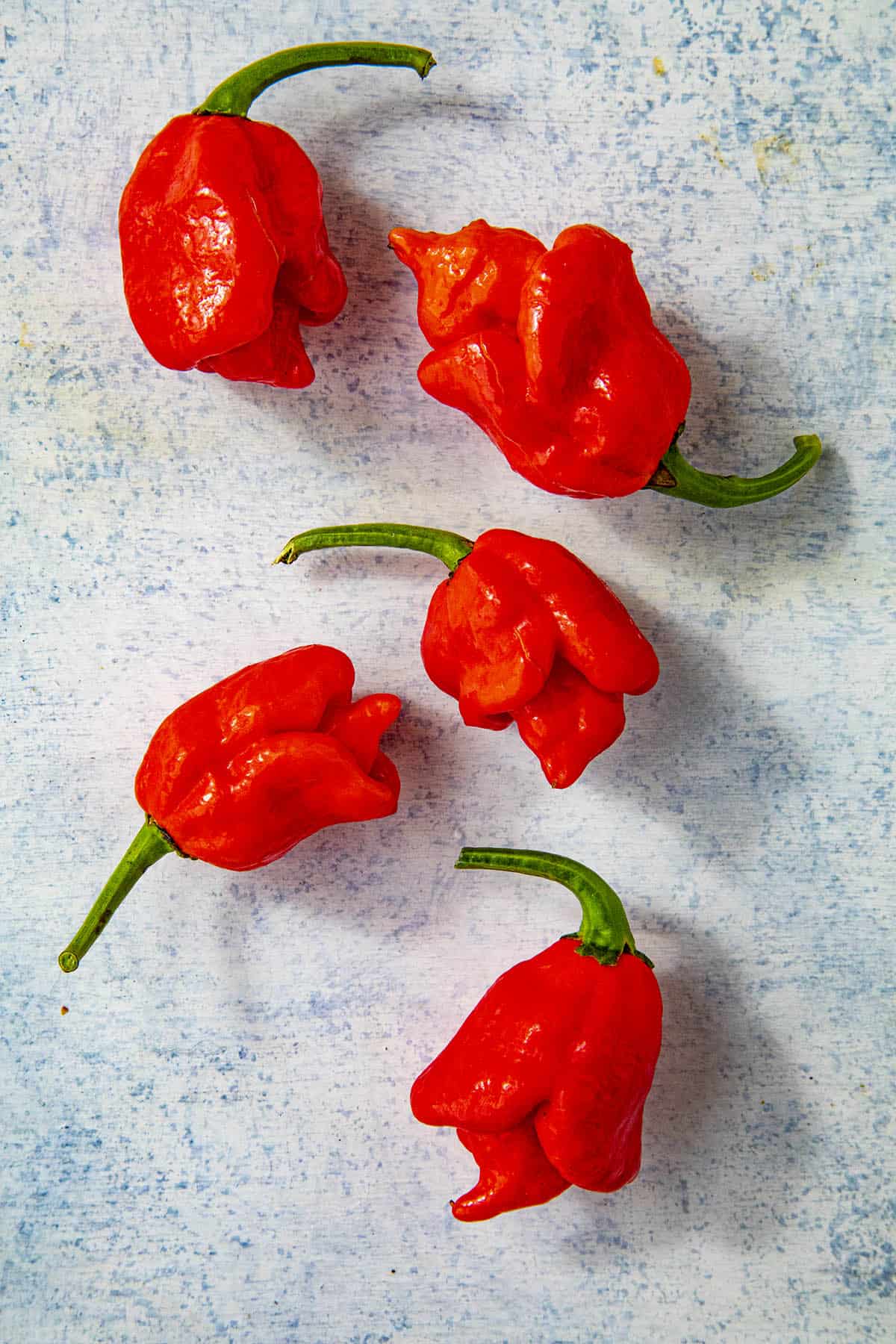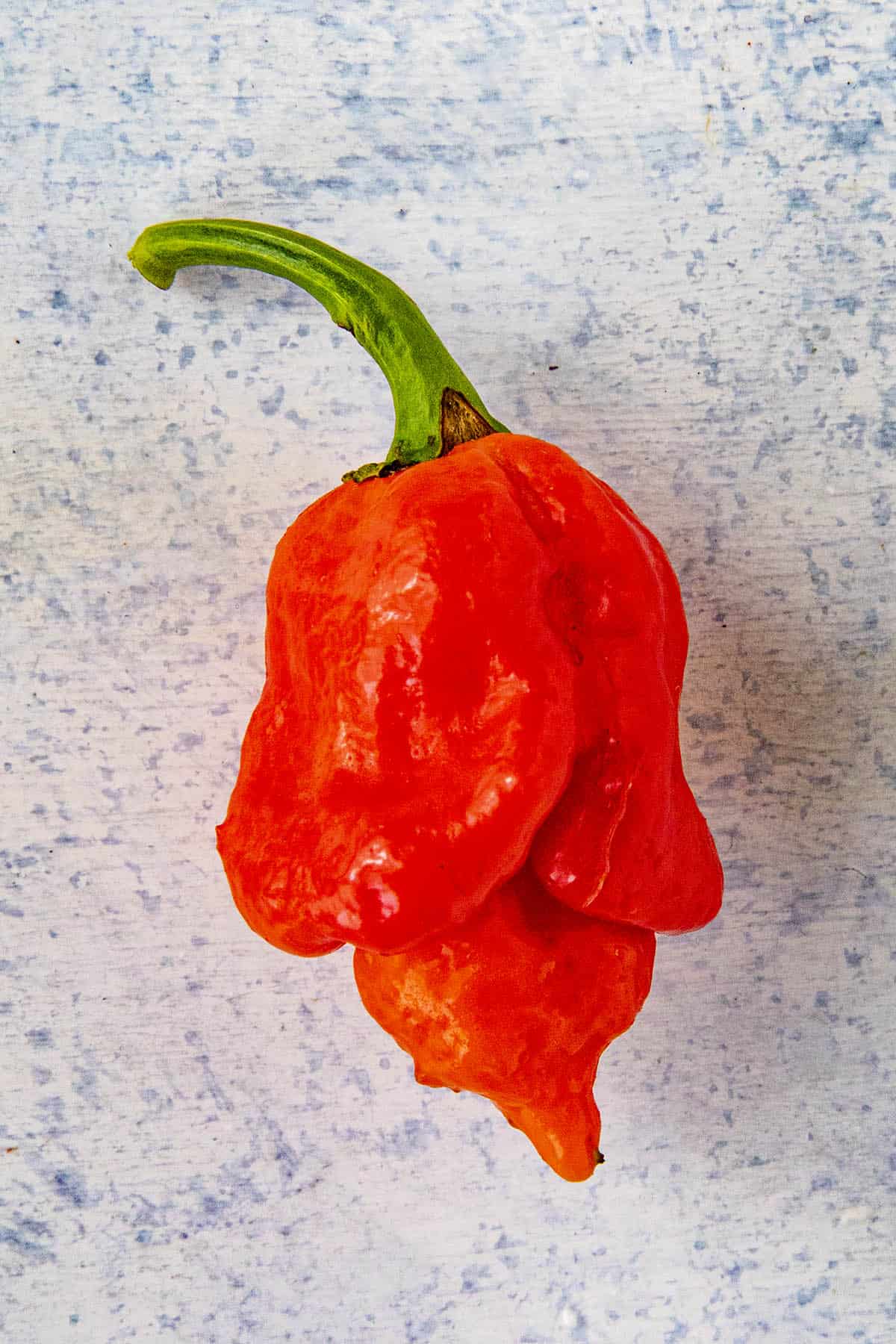NOTE: This post was updated on 3/15/22 to include new information. It was originally published on 10/23/13. The Trinidad Scorpion pepper is a chili pepper hailing from the Caribbean. It is native to Trinidad and Tobago. These red, wrinkled peppers sport tails that resemble the scorpion, hence the name, and are known for their intense heat. Scorpion peppers were fairly uncommon in the early 2000s, even in Trinidad, though their popularity exploded with the announcement of the Trinidad Scorpion Butch T variety in 2011, which briefly earned the title of “Hottest Pepper in the World”. Since then, scorpion peppers have become increasingly common, with growers creating many different varieties and strains, with names like Chocolate Scorpions, Kraken Scorpions, and Apocalypse Scorpions, among others. They are very hot and mature from green to vibrant red, though you’ll find other varieties that mature to yellow, brown, and even peach. Plant has green stems, green leaves, and creamy-yellow flowers. Compare that to a jalapeno pepper, which averages around 5,000 SHU and you’ll find that the Trinidad scorpion is roughly 60 times hotter. However, there are hotter varieties. The most famous of this particular pepper is the Trinidad Scorpion Butch T pepper, which is one of the hottest peppers in the world measuring over 1.4 Million Scoville Heat Units and median heat of nearly 1.2 Million SHU with bumpy skin and a scorpion-like tail. That pepper is indigenous to Tobago and Trinidad, and was propagated in the United States by Butch Taylor in 2011, who provided seeds to Neil Smith of The Hippy Seed Company and Marcel de Wit, from the Chilli Factory, both in Australia. It went on to hold the world record for chili pepper heat for a time. Another is the Trinidad Moruga Scorpion, which over took the Trinidad scorpion pepper and measures in at over 2 Million SHU. Talk about a hot pepper. They have a somewhat fruity flavor, but also an intense, quick burst of biting heat that takes a while to subside, which I call the “scorpion sting”. If you do experience heat on your skin or from eating these peppers, see my page on how to stop the chili pepper burn for helpful information. Lay them onto dehydrator sheets and dry them at least 8 hours at 130 degrees F, or until they are completely dried and brittle. Then you can grind them into powders or save them for rehydrating or grinding later. See my post on Dehydrating Chili Peppers. Got any questions? Ask away! I’m glad to help.

